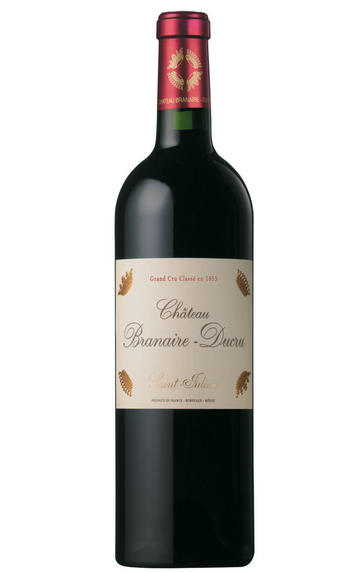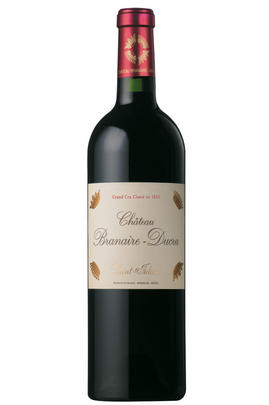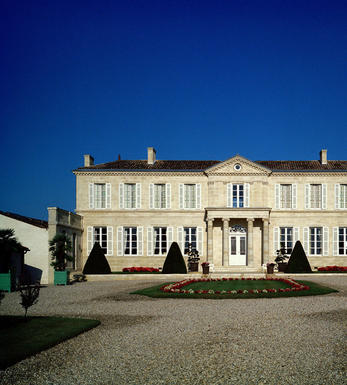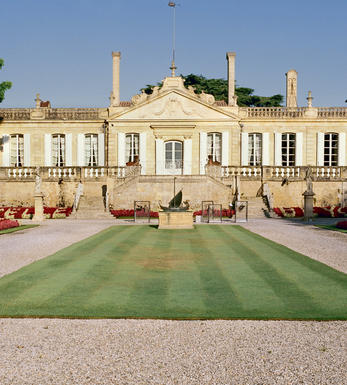
2008 Château Branaire-Ducru, St Julien, Bordeaux

Critics reviews
The 2008 Branaire Ducru has a clean and fresh bouquet with mulberry, blackcurrant pastilles, and subtle hints of eucalyptus that are all detailed and focused if missing the complexity of more recent vintages. The palate is medium-bodied with thickset tannin, quite dense black fruit with a touch of cassis. I like the atypical density of this 2008, although I would like more panache and personality to shine through.
There was no easing into the job and frankly I would not want it any other way on my first day. Wines tasted in the morning at an annual ten-year on Bordeaux tasting on one side of the Atlantic, written up on the flight over to New York with my mouth still coated in tannin and completed on the other side of the Atlantic...just a day in the life, so that readers get an idea how things are going to roll with the 2008 Bordeaux.
Drink 2018 - 2035
Neal Martin, Vinous.com (February 2018)
Opaque purple-ruby. Very rich nose offers sweet blueberry syrup and blackberry jam aromas, with a topnote of nutmeg and crystallized ginger. Also quite spicy on the palate, where it boasts great purity to its blackberry and plum flavors. Quite concentrated and long, though it seems almost light thanks to wonderfully harmonious acids. Finishes with still youthful but very polished tannins and a late kick of cracked black pepper and smoked bacon. Owner Patrick Maroteaux feels this is one of the five best Branaires of the last 25 years and he won't get any argument from me.
Ian D'Agata, Vinous.com (May 2009)
A little more rigid than some, this is not particularly generous but has fine layers of bilberry fruit, tannins and acidity. It's well put together and extremely classic - it could perhaps do with having a little more fun along the way.
Drink 2018 - 2028
Jane Anson, Decanter.com (January 2018)
A stunning success for the vintage, this enticing St.-Julien reveals notes of lead pencil shavings, sweet raspberries and black currants and a subtle touch of oak. Elegant, restrained yet authoritative and impressively intense, it is a medium to full-bodied, lightly tannic effort will be even better with 1-2 years of bottle age and will keep for 15-20 years.
Drink 2012 - 2032
Robert M. Parker, Jr., Wine Advocate (May 2011)
Tasted blind. Sweet, succulent nose. Lots of freshness. Lots of vigour and focus though very much in the dry rather than sweet spectrum on the palate. Correct rather than fun.
Drink 2020 - 2038
Jancis Robinson MW, JancisRobinson.com (March 2018)
Dark red with ruby tones. Musky aromas of currant, dark plum and chocolate, along with a riper hint of black raspberry. Quite dry and uncompromising, with very good intensity and clarity to the medicinal flavors of dark fruits, blueberry skin, minerals and leather. Finishes backward, even a bit disjointed, with edgy acidity and dusty tannins in need of time to harmonize. Rather atypically unforthcoming for a young Branaire, but built for an extended life in bottle.
Stephen Tanzer, Vinous.com (July 2011)
About this WINE

Château Branaire-Ducru
Classified as a fourth growth in 1855, Ch. Branaire-Ducru makes pure and classic St Julien. The estate has recently passed from father to son: the widely respected Patrick Maroteaux – who had served at various times as president of the Union des Grands Crus de Bordeaux and the St Julien appellation – sadly passed away in 2017. His son François-Xavier has picked up the baton and continues his father’s legacy. The Maroteaux family bought the property in 1988 and have invested considerably in the vineyard and winery since. Superstar consultant Eric Boissenot advises here, as he does with many of the Left Bank’s top estates, including the Médoc’s four first growths.

St Julien
St Julien is the smallest of the "Big Four" Médoc communes. Although, without any First Growths, St Julien is recognised to be the most consistent of the main communes, with several châteaux turning out impressive wines year after year.
St Julien itself is much more of a village than Pauillac and almost all of the notable properties lie to its south. Its most northerly château is Ch. Léoville Las Cases (whose vineyards actually adjoin those of Latour in Pauillac) but, further south, suitable vineyard land gives way to arable farming and livestock until the Margaux appellation is reached.
The soil is gravelly and finer than that of Pauillac, and without the iron content which gives Pauillac its stature. The homogeneous soils in the vineyards (which extend over a relatively small area of just over 700 hectares) give the commune a unified character.
The wines can be assessed as much by texture as flavour, and there is a sleek, wholesome character to the best. Elegance, harmony and perfect balance and weight, with hints of cassis and cedar, are what epitomise classic St Julien wines. At their very best they combine Margaux’s elegance and refinement with Pauillac’s power and substance.
Ch. Léoville Las Cases produces arguably the most sought-after St Julien, and in any reassessment of the 1855 Classification it would almost certainly warrant being elevated to First Growth status.
Recommended Châteaux: Ch. Léoville Las Cases, Ch.Léoville Barton, Ch Léoville Poyferré, Ch. Ducru-Beaucaillou, Ch Langoa Barton, Ch Gruaud Larose, Ch. Branaire-Ducru, Ch. Beychevelle

Cabernet Sauvignon Blend
Cabernet Sauvignon lends itself particularly well in blends with Merlot. This is actually the archetypal Bordeaux blend, though in different proportions in the sub-regions and sometimes topped up with Cabernet Franc, Malbec, and Petit Verdot.
In the Médoc and Graves the percentage of Cabernet Sauvignon in the blend can range from 95% (Mouton-Rothschild) to as low as 40%. It is particularly suited to the dry, warm, free- draining, gravel-rich soils and is responsible for the redolent cassis characteristics as well as the depth of colour, tannic structure and pronounced acidity of Médoc wines. However 100% Cabernet Sauvignon wines can be slightly hollow-tasting in the middle palate and Merlot with its generous, fleshy fruit flavours acts as a perfect foil by filling in this cavity.
In St-Emilion and Pomerol, the blends are Merlot dominated as Cabernet Sauvignon can struggle to ripen there - when it is included, it adds structure and body to the wine. Sassicaia is the most famous Bordeaux blend in Italy and has spawned many imitations, whereby the blend is now firmly established in the New World and particularly in California and Australia.


Buying options
Add to wishlist
Description
The 2008 Branaire Ducru has a clean and fresh bouquet with mulberry, blackcurrant pastilles, and subtle hints of eucalyptus that are all detailed and focused if missing the complexity of more recent vintages. The palate is medium-bodied with thickset tannin, quite dense black fruit with a touch of cassis. I like the atypical density of this 2008, although I would like more panache and personality to shine through.
There was no easing into the job and frankly I would not want it any other way on my first day. Wines tasted in the morning at an annual ten-year on Bordeaux tasting on one side of the Atlantic, written up on the flight over to New York with my mouth still coated in tannin and completed on the other side of the Atlantic...just a day in the life, so that readers get an idea how things are going to roll with the 2008 Bordeaux.
Drink 2018 - 2035
Neal Martin, Vinous.com (February 2018)
wine at a glance
Delivery and quality guarantee